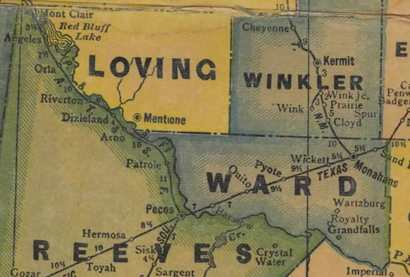While there is wide spread concern about nuclear waste in the United States, some small towns are lobbying to host nuclear waste dumps. I have posted several blogs about the problems at the Waste Isolation Pilot Plant (WIPP) near Carlsbad, New Mexico. After particles of plutonium and americium were detected twenty miles away from the WIPP site, the repository was shut down. It was found that a waste drum had exploded and released its contents. While the exact cause of the explosion is still being debated, there is concern that there are more drums that could explode. Some analysts say that the WIPP may never be reopened. Investigators found that there was a "culture of unsafe practices and history of irregular inspections" at WIPP.
The U.S. Energy Secretary announced Monday that he would get the WIPP repository operating again. Residents of Carlsbad supported the announcement and endorsed the reopening of the WIPP in spite of the problems. With all the financial problems that many small communities are having, even if an industry is dangerous, it is still welcome if it brings jobs to the community. The siting of the WIPP near Carlsbad brought a thousand jobs to the area. Most of the two hundred million dollar annual budget of the WIPP goes to wages for those thousand jobs. The federal government has spent over six billion dollars at the WIPP and, if the site is reopened, billions more will be spent in filling the repository with low-level nuclear waste from U.S. nuclear weapons programs.
Officials in Loving County, Texas have been lobbying the federal government to spend twenty eight billion dollars to dispose of high-level radioactive waste in their area. There are only ninety five people living in the county. A county judge said that the money brought in by a nuclear waste dump would allow the county to incorporate a town, seat a city council, build a school and pay for other improvements such as paved roads.
Many communities are not interested in having a nuclear waste repository anywhere near them. When the Obama administration canceled the Yucca Mountain Repository in Nevada, many Nevada residents were happy to see the project abandoned. It is estimated that there are at least seventy two thousand tons of nuclear waste in the U.S. and there will not be a permanent geological repository in the U.S. before 2050. In the meantime, temporary storage will have to be developed or the waste will overwhelm the storage capacity of spent fuel pools at reactor sites.
Some of the radioactive materials in nuclear waste can be dangerous for hundreds of millions of years. Where ever the waste is eventually stored, it is imperative that future generations know that it is dangerous. In millions of years, any current language will have disappeared. There have been suggestions that some sort of graphic symbols be developed that would serve to warn future humanity of the danger which may or may not be possible. Perhaps the idea of drilling deep holes in bedrock, burying the waste and filling in the holes would be better than storage in a salt mine such as the WIPP. With the waste miles below the surface of the Earth and a pristine landscape above, future generations do not even need to know or worry about the nuclear waste left over from our era.
